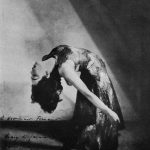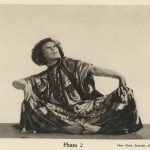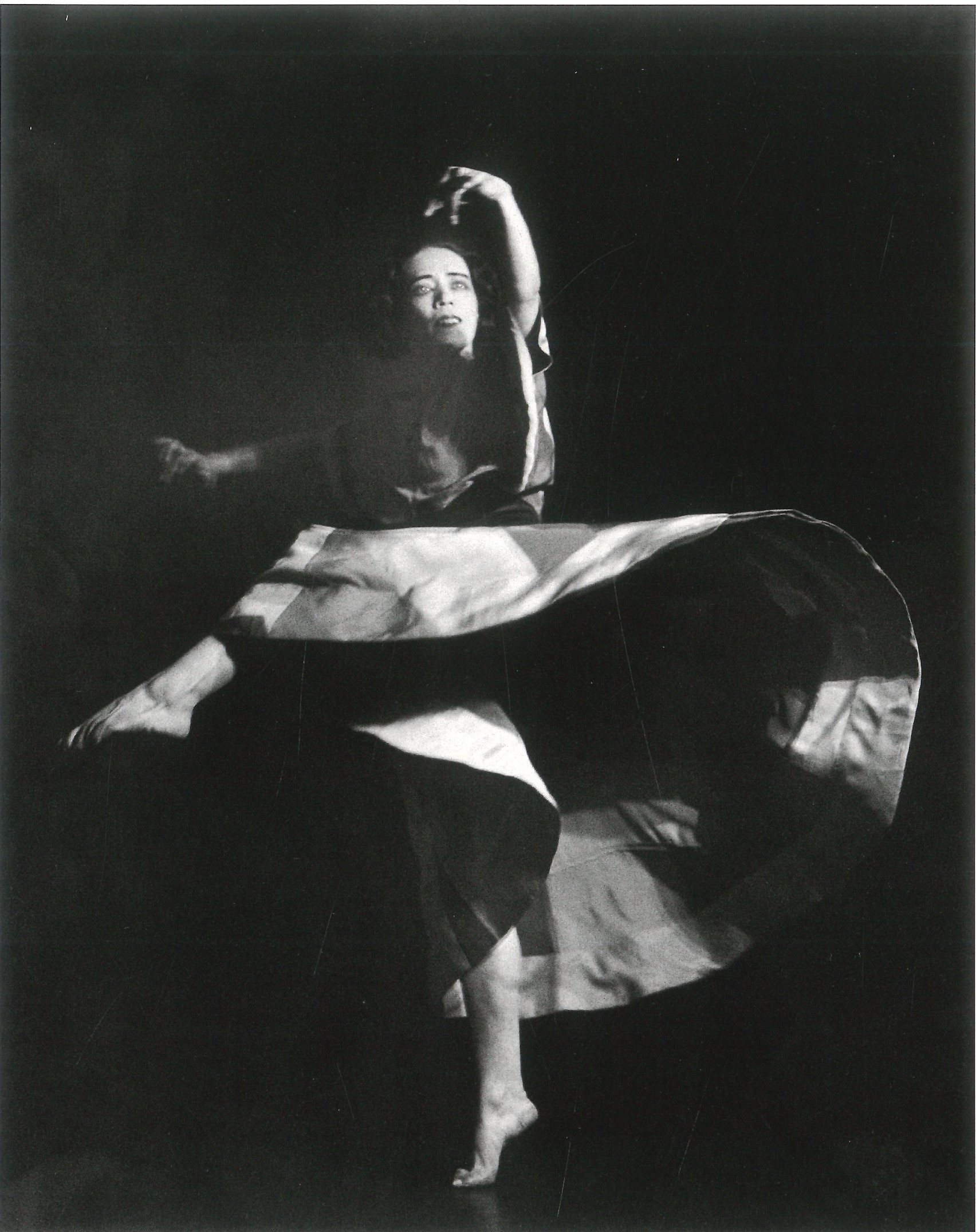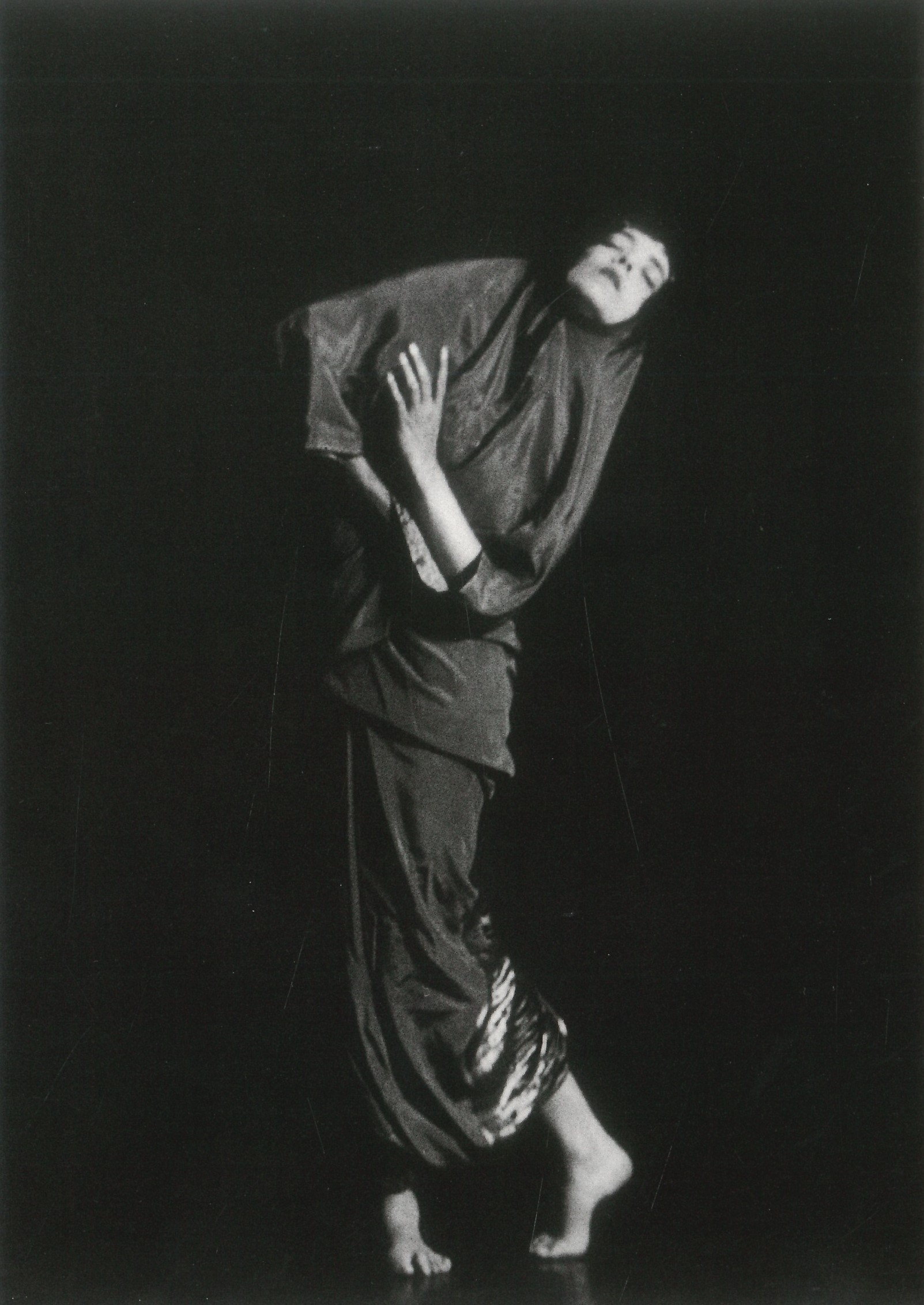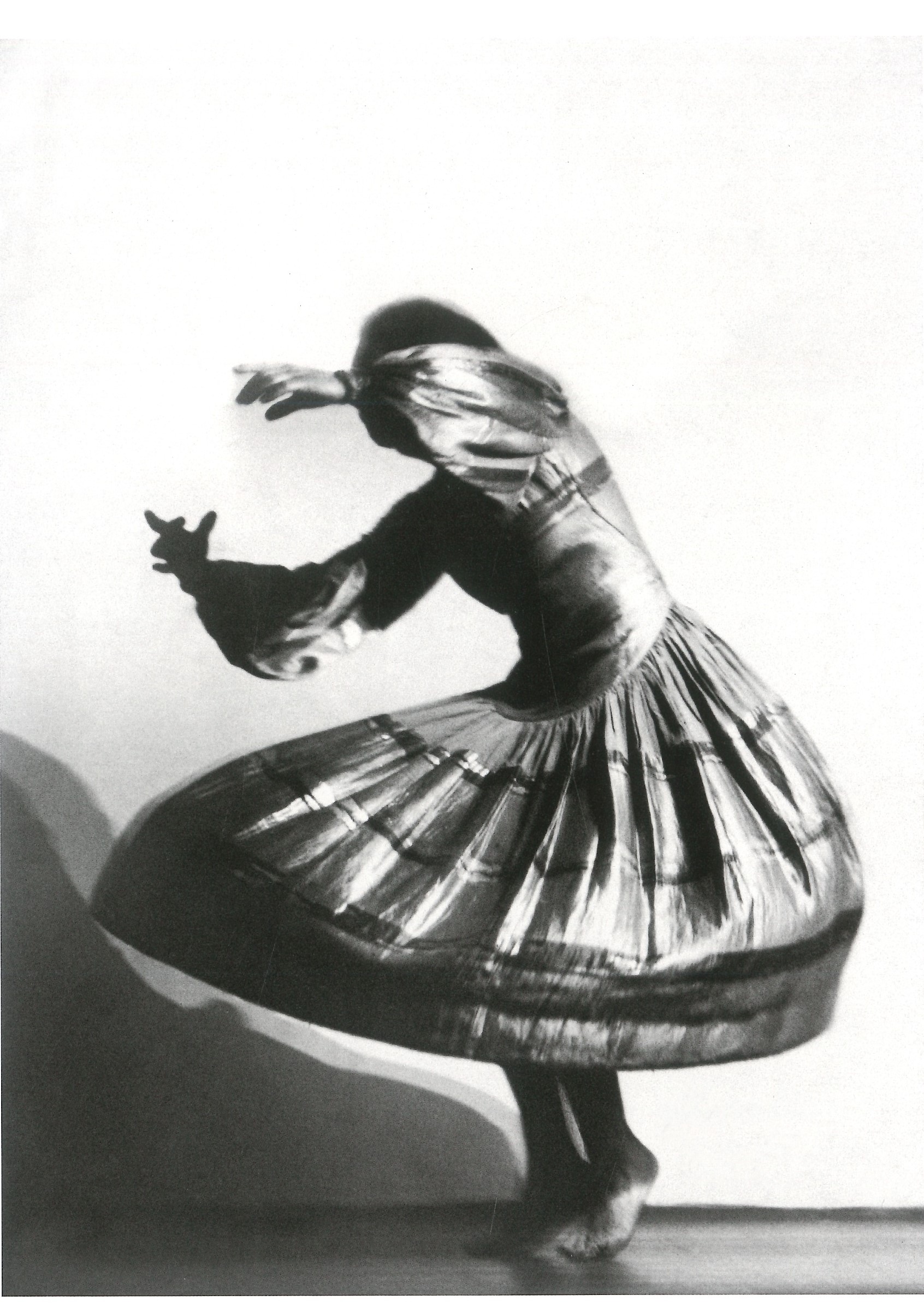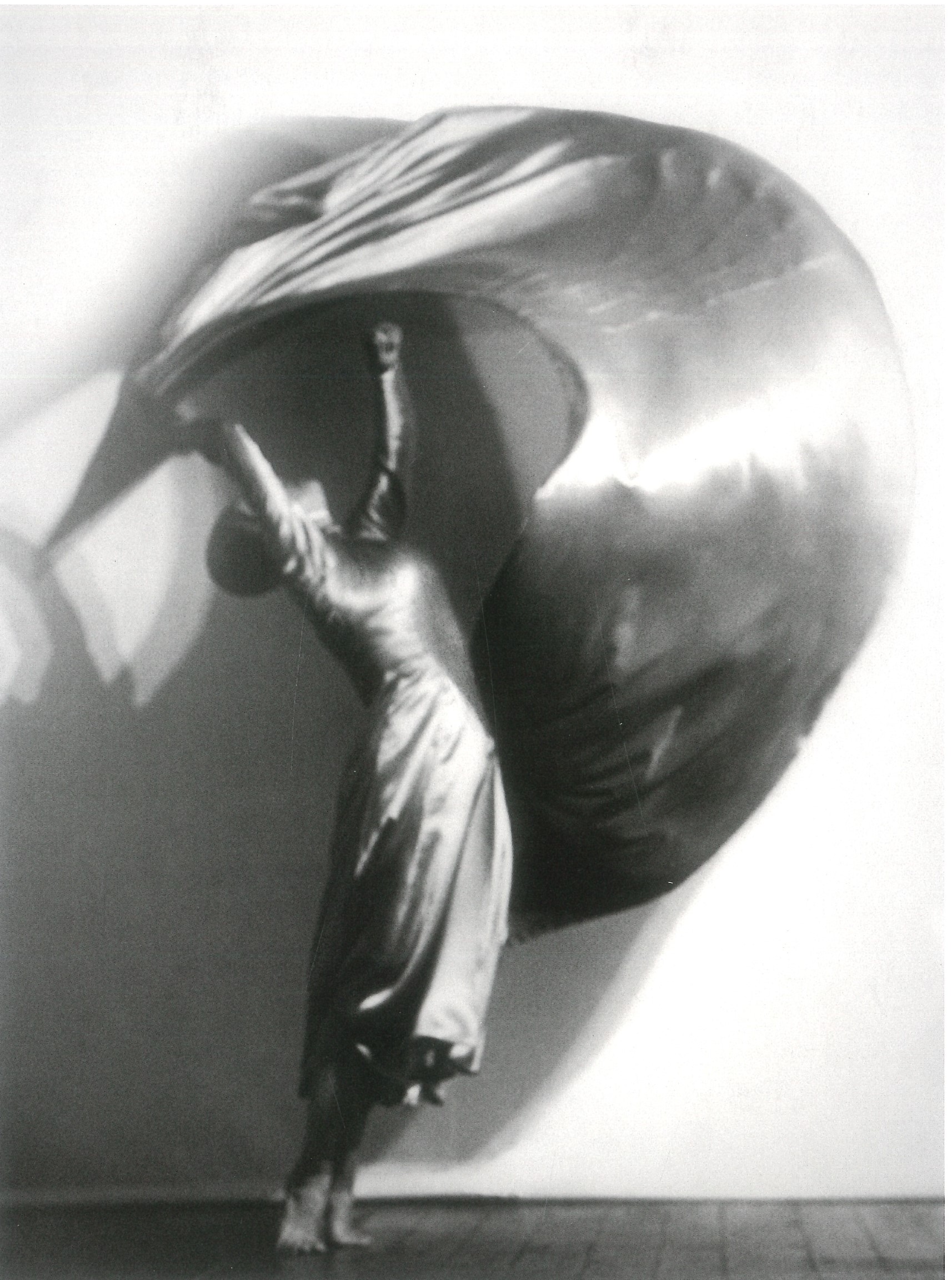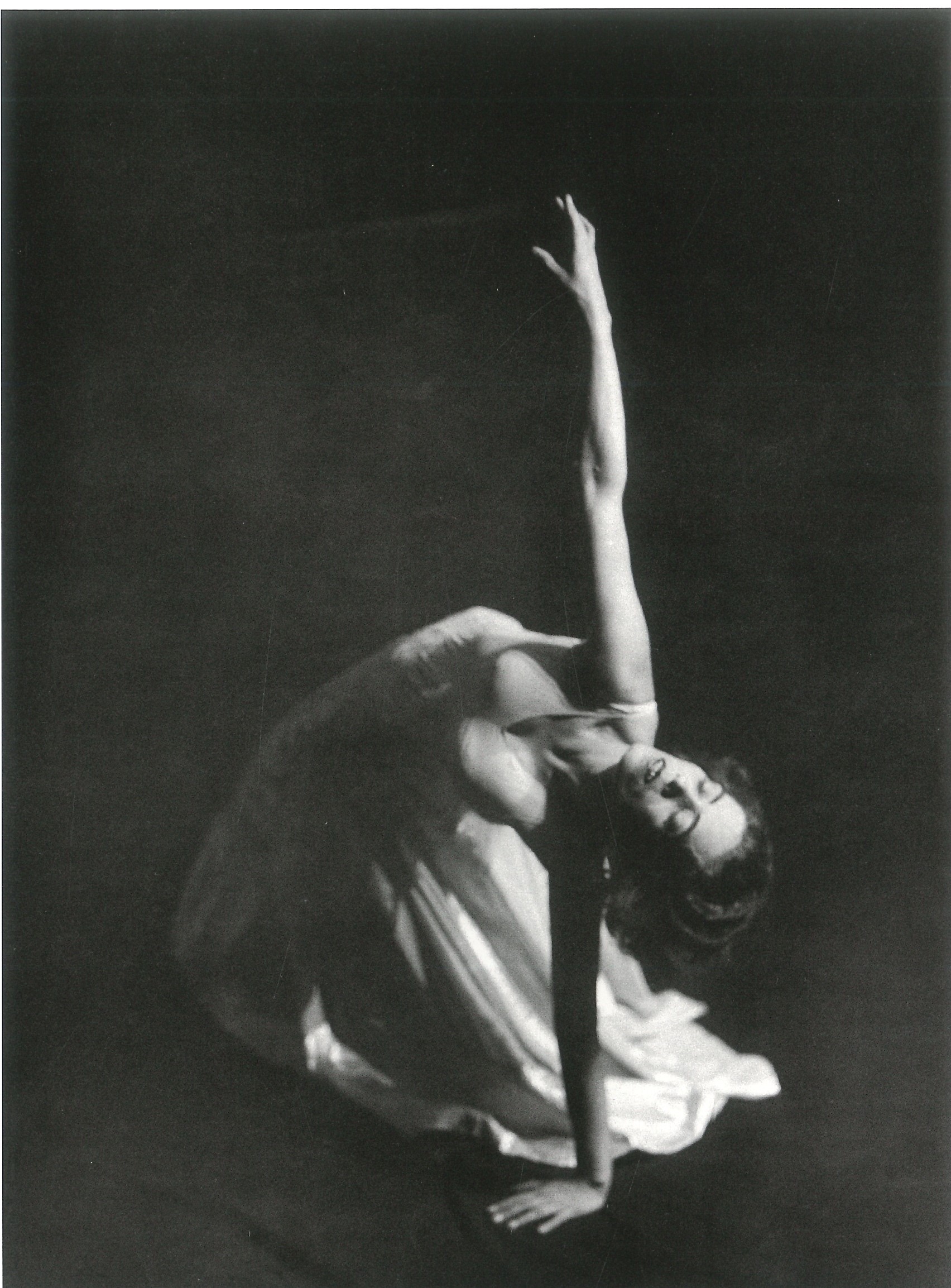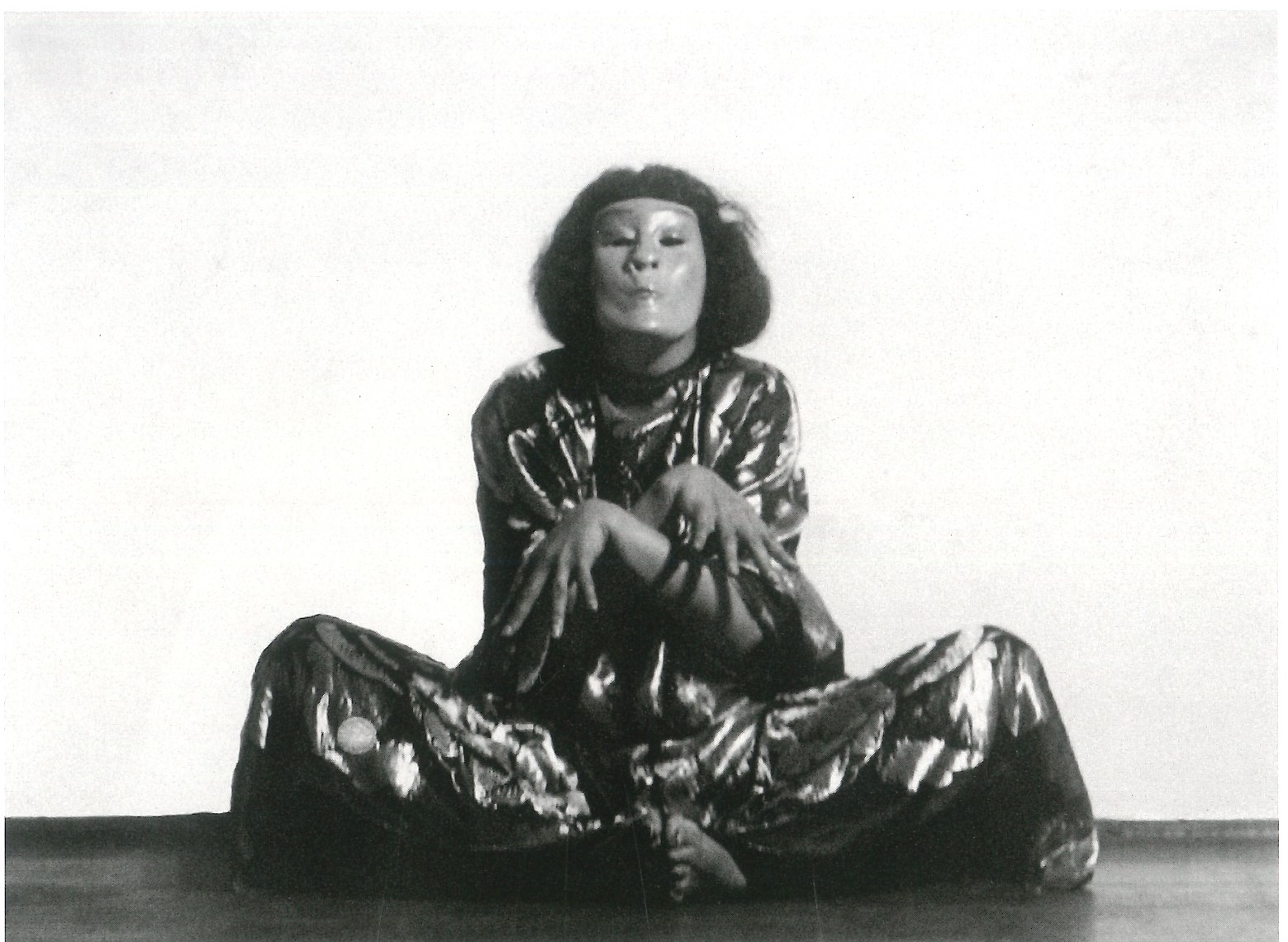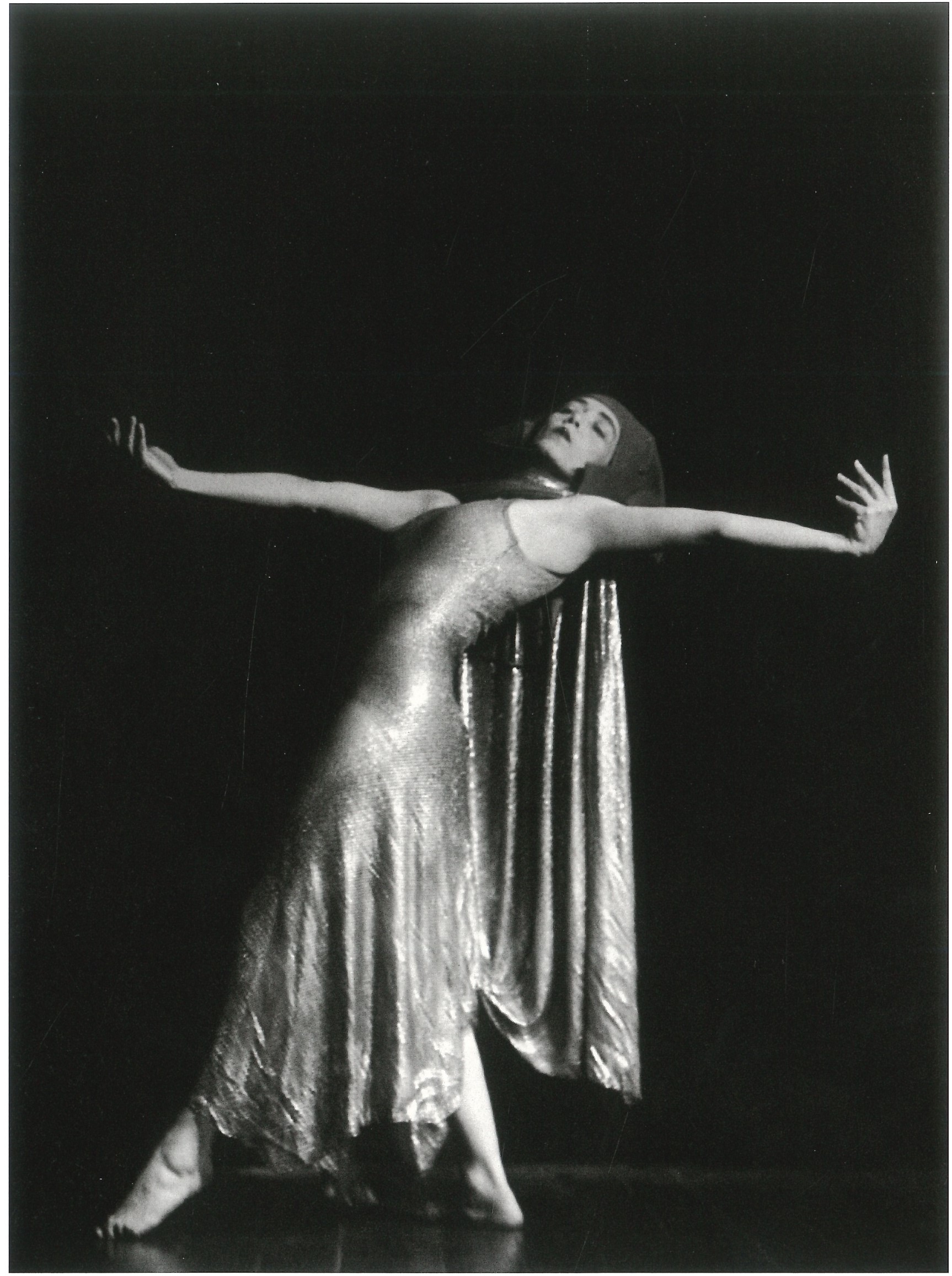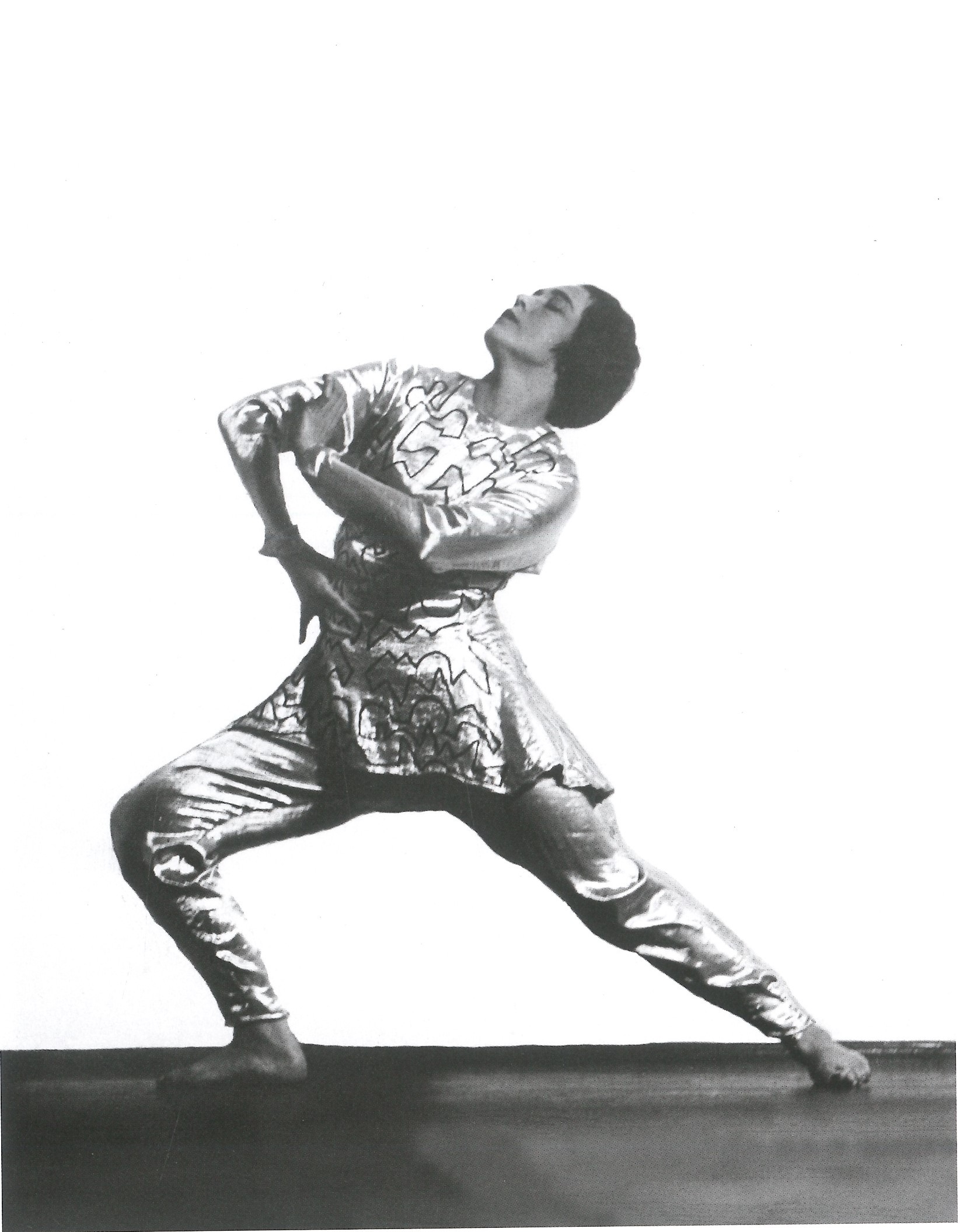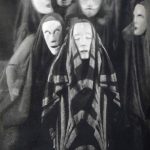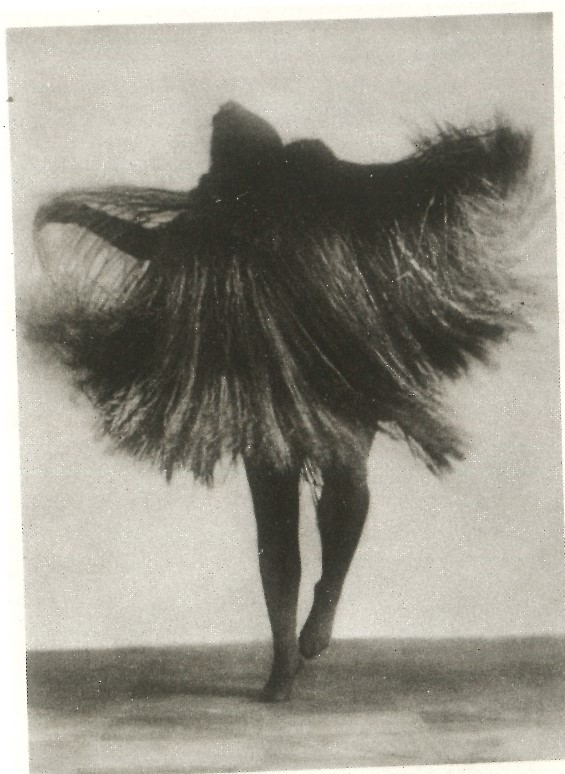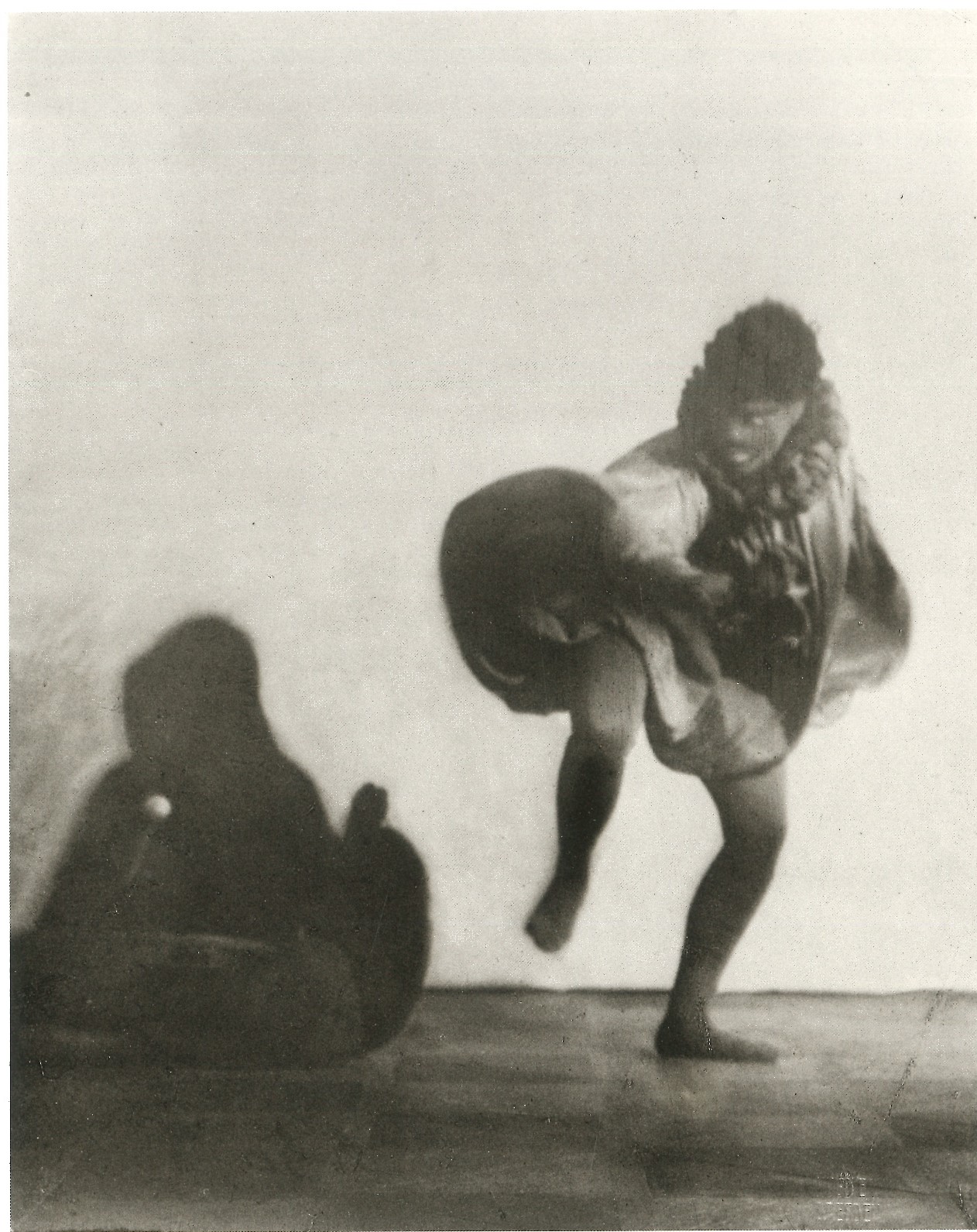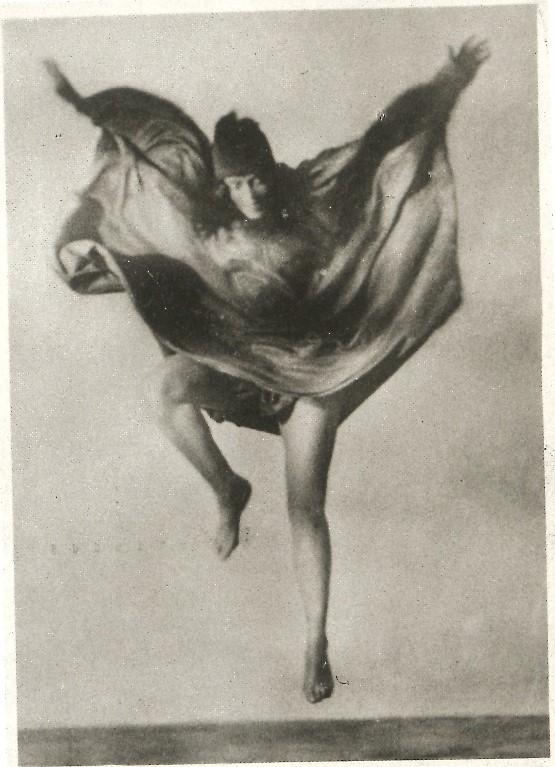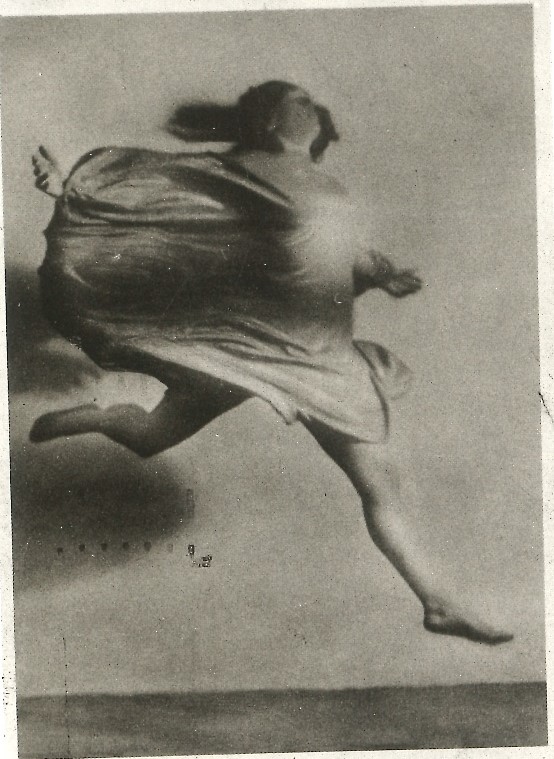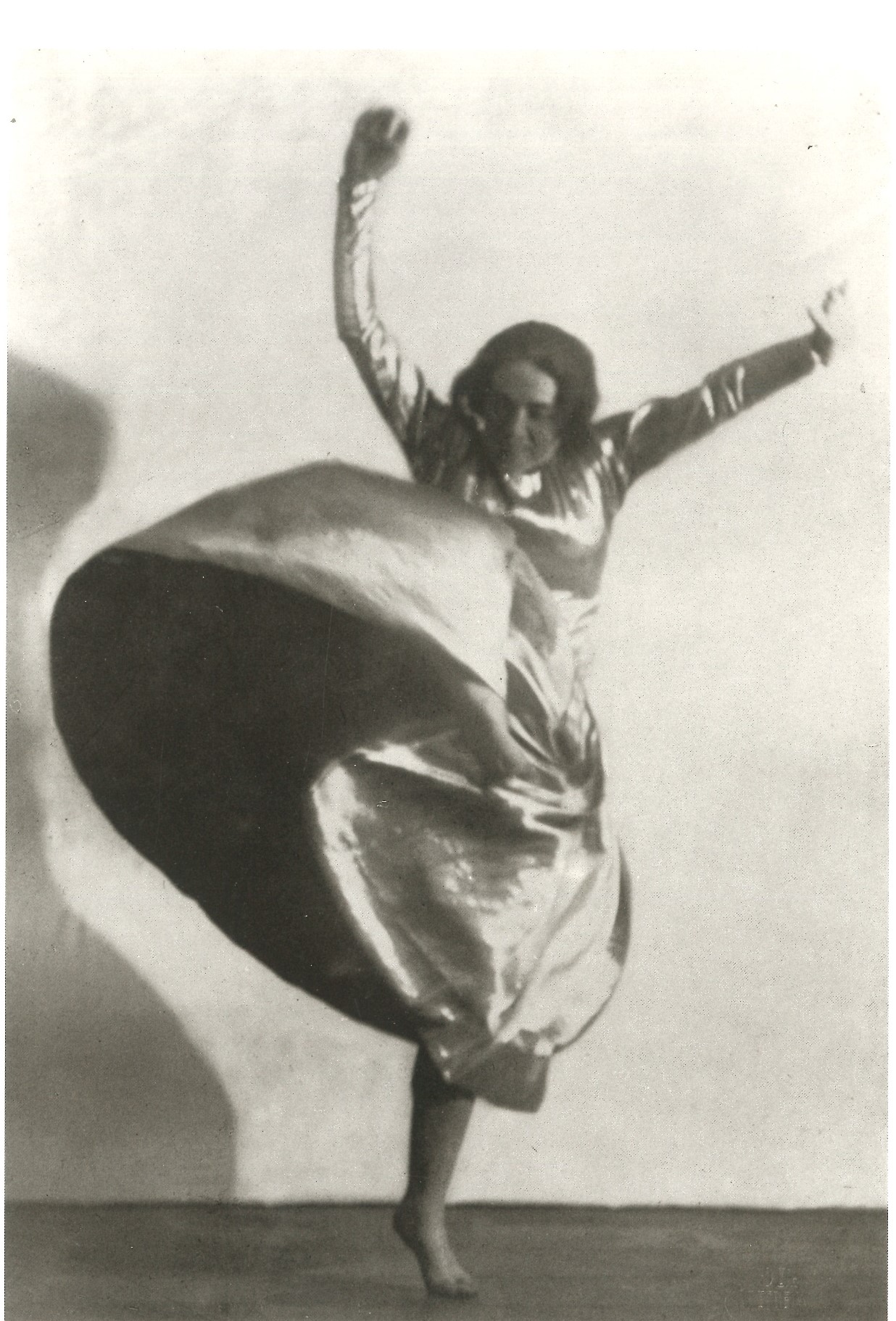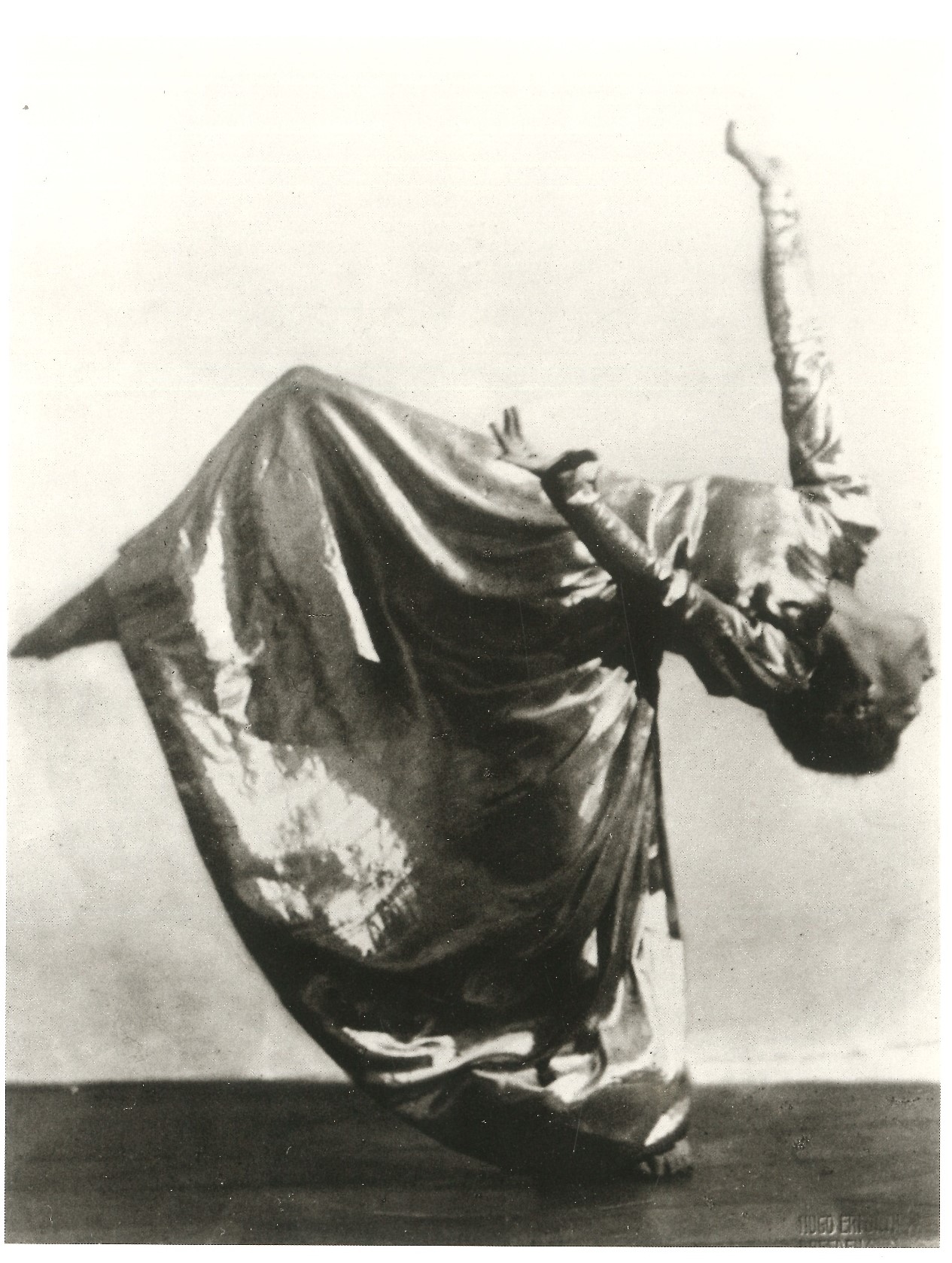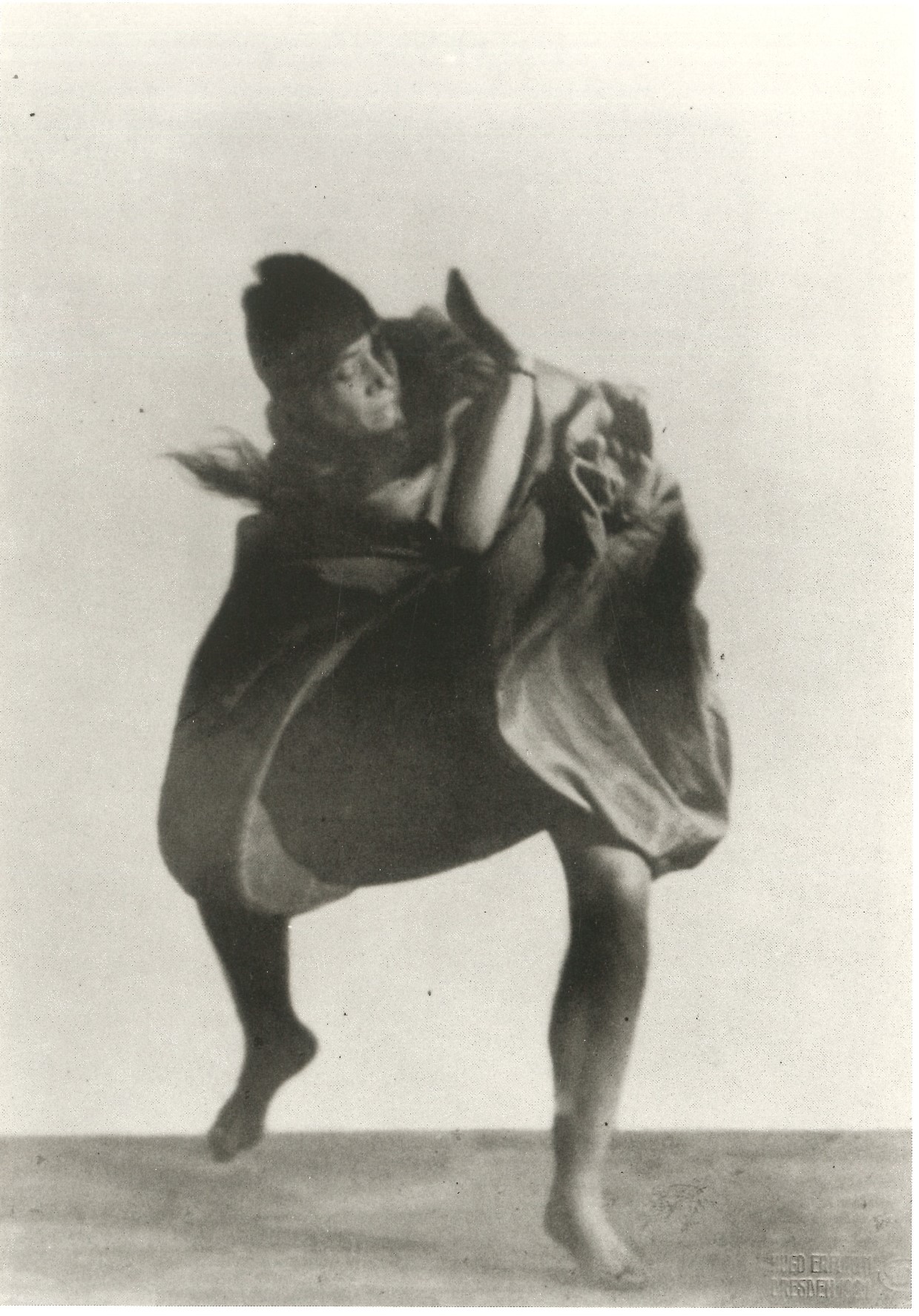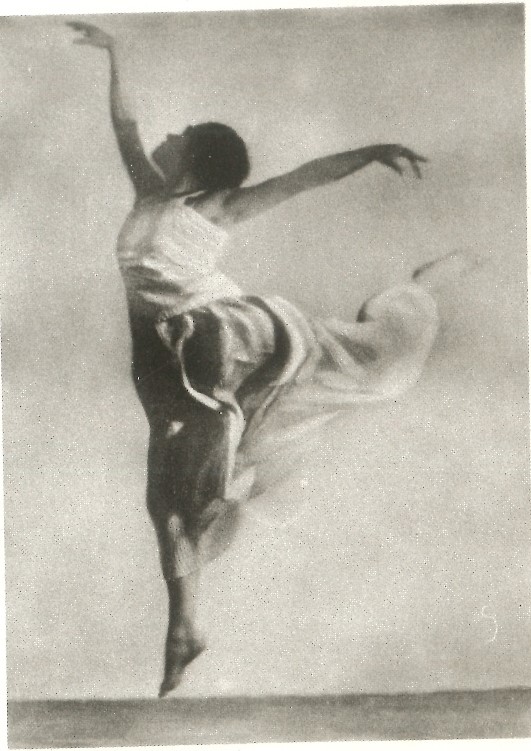Mary Wigman (Hannover 1886 – Berlino 1973), nome d’arte di Karoline Sophie Marie Wiegmann, nasce a Hannover il 13 novembre 1886, da Amelie Jacobs e Heinrich Wiegmann, noto commerciante di biciclette e macchine da cucire. Primogenita di quattro figli, da giovane frequenta l’istituto superiore femminile, studia canto e pianoforte al conservatorio di Hannover e si reca più volte all’estero, prima in Gran Bretagna poi in Francia per studiare le lingue. Nel 1905 si trova ad Amsterdam e assiste ad una dimostrazione di ginnastica ritmica degli allievi di Émile Jaques-Dalcroze. Nonostante le forti resistenze da parte della famiglia, dal 1910 frequenta i corsi di Jaques-Dalcroze nella scuola di Hellerau e ottenuto il diploma nel 1912, si trasferisce a Roma per studiare arte. Nel 1913 le viene offerto un posto come insegnante del metodo dalcroziano, ma lo rifiuta per recarsi sul Monte Verità a seguire i corsi di Rudolf Laban, dietro consiglio del pittore espressionista e amico di Marie, Emil Nolde. L’11 febbraio 1914 a Monaco, nel contesto della prima dimostrazione pubblica del lavoro di Laban e dei suoi allievi, va in scena il primo assolo di Mary Wigman. Si tratta della prima versione di Hexentanz (la danza della strega), interamente eseguita a terra, con il volto coperto da una maschera, accompagnata esclusivamente da strumenti a percussione. Wigman riproporrà questo assolo in diverse versioni durante tutta la sua carriera fino a farlo diventare un simbolo di sé stessa e della Ausdruckstanz. Nell’estate del 1914, mentre scoppia la prima guerra mondiale, Wigman si trova sul Monte Verità dove lavora al fianco di Laban. La collaborazione prosegue anche nella sede invernale della scuola a Zurigo fino al 1916. Nel 1917 partecipa alle manifestazioni dadaiste del Cabaret Voltaire. Nel 1918 le viene diagnosticata la tubercolosi, causata probabilmente dal trauma dovuto alla morte del patrigno e dal ritorno del fratello Heinrich mutilato dalla guerra. Durante il ricovero nel sanatorio di Walensee in Svizzera, compone i poemi da cui nascerà il ciclo di danze di gruppo Die sieben Tänze des Lebens (le sette danze della vita). Nello stesso anno cambia il suo nome in Mary Wigman. Nel 1919 compie la sua prima tournée in Germania accompagnata da Berthe Trümpy. A Berlino conosce il pittore russo Lasar Segall e il critico d’arte Will Grohmann, il quale la invita a esibirsi a Dresda, dove riscuoterà il successo mancato a Monaco e a Berlino. Nel 1920, con il sostegno di Berthe Trümpy e della sorella Elisabeth, apre una scuola a Dresda nella villa in Schillerstrasse 17. Nel 1921, grazie ai finanziamenti ottenuti dalla città di Dresda, dalla regione della Sassonia e dalla Repubblica, fonda la compagnia Kammertanzgruppe (in seguito nominata Wigman Tanzgruppe) da cui usciranno alcuni dei danzatori e coreografi più famosi del Novecento come, Gret Palucca, Harald Kreutzberg, Yvonne Georgi, Margarethe Wallmann, Max Terpis. Diventa una delle danzatrici più fotografate da Hugo Erfurth prima e da Charlotte Rudolph poi. Con quest’ultima instaura una collaborazione professionale dal 1925 al 1942, nonché un rapporto di amicizia lungo tutta la loro vita. Dopo numerose tournée in Europa, nel 1930 debutta a New York, dove il grandissimo successo riscontrato la spinge ad aprire anche lì una sede della sua scuola, che sarà gestita dall’allieva Hanya Holm. Nel 1933 con l’ascesa al potere del partito nazista, Wigman è costretta a riorganizzare i corsi della scuola inserendo la danza classica e la ginnastica, in modo tale da poter ricevere le sovvenzioni statali. Nel 1934 partecipa come membro della giuria ai Deutsche Tanzfestspiele organizzati dal Ministero della Propaganda e nel 1936 si esibisce durante i giochi olimpici di Berlino. Il 27 aprile 1942 va in scena per l’ultima volta a Lipsia con l’assolo Abschied und Dank (congedo e ringraziamento). Continua a lavorare come coreografa, regista e insegnante. Nel 1955 diventa membro ordinario dell’Accademia delle Arti di Berlino. Nell’estate del 1973 viene ricoverata a seguito di una caduta. Muore a Berlino all’età di 87 anni il 18 settembre 1973. [Sara Morassut]
Fonti e Bibl.: Hedwig Müller, Mary Wigman: Leben und Werk der grossen Tänzerin, Quadriga, Berlin 1986; Christiane Kuhlmann, Bewegter Körper- Mechanischer Apparat. Zur medialen Verschränkung von Tanz und Fotografie in den 1920er Jahren, Peter Lang, Frankfurt am Main 2003; Christiane Kuhlmann, Charlotte Rudolph. Tanzphotographie 1924-1939, Steidl, Göttingen 2004; Mary Anne Newhall, Mary Wigman, Routledge, London/New York 2009; Susan Manning, Mary Wigman e la danza tedesca del primo Novecento (trad. it. a cura di Patrizia Veroli), Istituto italiano di studi germanici, Roma 2016 (ed. orig., Ecstasy and the Demon: The Dances of Mary Wigman, University of Minnesota Press, Minneapolis 2006); Sara Morassut, Tanzphotographie. La scuola tedesca, in La camera meravigliosa. Per un atlante della fotografia di danza, a cura di Samantha Marenzi, Simona Silvestri, Francesca Pietrisanti, “La Scena dei saperi”, vol. 2, Editoriale Idea, Roma 2020; Deutsches Tanzarchiv Köln https://www.sk-kultur.de/tanz/wigman/; Akademie der Künste Berlin https://archiv.adk.de/bigobjekt/5822.
Mary Wigman (Hanover, 1886 – Berlin, 1973), stage name of Karoline Sophie Marie Wiegmann, was born in Hanover on November 13 1886, to Amelie Jacobs and Heinrich Wiegmann, a popular bicycles and sewing machines salesman. Firstborn of four sons, she attended the women’s college, studied singing and piano at the Conservatory of Hannover and travelled abroad several times, first in Great Britain and then in France for language studies. In 1905, she was in Amsterdam and attended a demonstration of rhythmic gymnastics of the students of Émile Jaques-Dalcroze. Despite stiff resistance from the family, from 1910 she attended the courses of Jaques-Dalcroze in the school of Hellerau and, once she got her diploma in 1912, she moved to Rome to study art. In 1913, she obtained a job offer as a teacher of the Dalcrozian method, but she refused it to go to Monte Verità to take the courses of Rudolf Laban, acting on the advice of the expressionist painter and friend of her, Emil Nolde. On February 11 1914, in Munich, in the context of the first public demonstration of the work of Laban and his students, the first solo by Mary Wigman made its debut. It was the first version of Hexentanz (the witch’s dance), entirely performed on the ground, with the face covered by a mask, accompanied exclusively by percussion instruments. Wigman repeated this solo in various versions throughout her career until it became a symbol of herself and Ausdruckstanz. During the summer of 1914, when World War I broke out, Wigman was on Monte Verità where she was working alongside Laban. The collaboration also continued in Zurich, in the winter venue of the school, until 1916. In 1917 she participated in the Dadaist demonstrations at the Cabaret Voltaire. In 1918, she was diagnosed with tuberculosis, probably caused by the trauma resulting from the death of her stepfather and the return from war of her mutilated brother Heinrich. During her hospitalization in the Walensee sanatorium in Switzerland, she composed the poems that inspired the cycle of group dances Die sieben Tänze des Lebens (the seven dances of life). In the same year she changed her name to Mary Wigman. In 1919, for the first time, she went on tour in Germany accompanied by Berthe Trümpy. In Berlin, she met the Russian painter Lasar Segall and the art critic Will Grohmann, who invited her to perform in Dresden, where she won the success he was not granted in Munich and Berlin. In 1920, with the support of Berthe Trümpy and her sister Elisabeth, she opened a school in Dresden in the Hauses Schillerstrasse 17. In 1921, thanks to the funding obtained from the city of Dresden, the Saxony region and the Republic, she founded the company Kammertanzgruppe (later named Wigman Tanzgruppe), from which came out some of the most famous twentieth-century dancers and choreographers such as, Gret Palucca, Harald Kreutzberg, Yvonne Georgi, Margarethe Wallmann, Max Terpis. She became one of the most photographed dancers by Hugo Erfurth first and then by Charlotte Rudolph. Along with her, she established a professional collaboration from 1925 to 1942, as well as a lifelong friendship. After many tours in Europe, in 1930 she made her debut in New York, where the enormous success achieved prompted her to open another school there, which was run by her student Hanya Holm. In 1933, with the rise of the Nazi party, Mary Wigman was forced to reorganize school courses by including ballet and gymnastics in order to receive state grants. In 1934 she participated as a member of the jury at the Deutsche Tanzfestspiele organized by the Propaganda Ministry, and in 1936 she performed during the Olympic Games in Berlin. On April 27 1942, she took the stage for the last time in Leipzig with the Abschied und Dank solo (leave and thanksgiving). She continued working as a choreographer, director and teacher. In 1955, she became a full member of the Berlin Academy of Arts. In the summer of 1973, she was hospitalized due to a fall. She died in Berlin at the age of 87 on September 18 1973. [Trans. by Marta Marinelli]
